Laser welding spatter formation mechanism 2
Aug 06, 2024
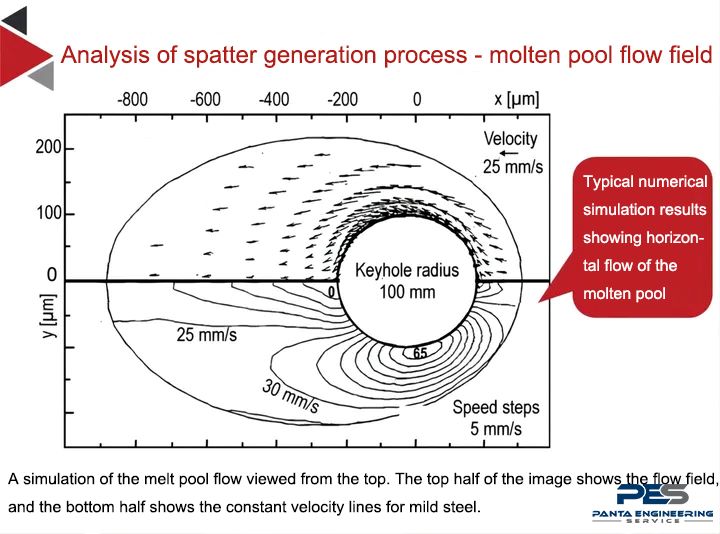
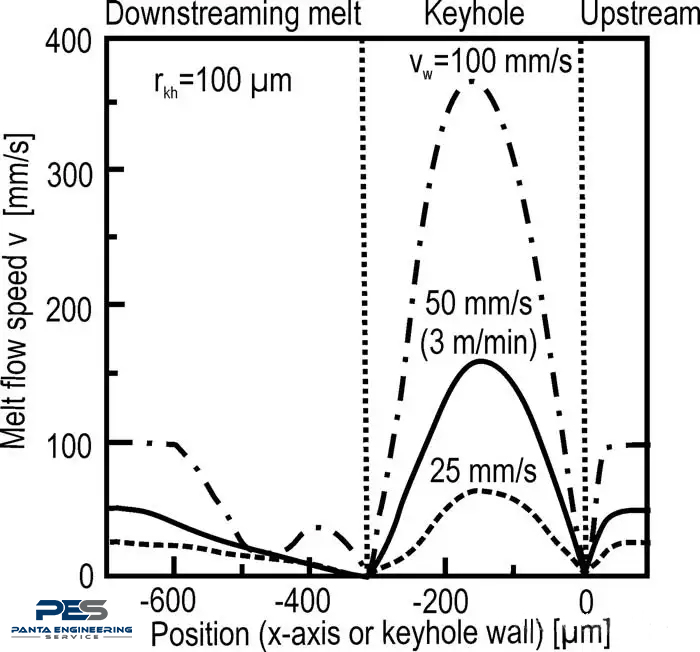
The figure above shows the calculated molten pool liquid flow velocity along the thick line in the left figure at three different welding speeds. The thick line represents the center line of the weld before and after the keyhole connection, as well as the edge of the keyhole. It can be clearly seen from the right figure that the flow velocity of the melt is significantly greater than the weld velocity due to the pressure exerted on the melt by the boiling keyhole wall. For example, at a welding speed of 100 mm/s and x=-150um, the calculated maximum liquid flow velocity exceeds 360 mm/s. It can be concluded here that if the flow is only in a two-dimensional direction, no spatter will occur, because the spatter is upwardly separated from the molten pool, and there is no axial kinetic energy on the two-dimensional surface, so the kinetic energy of the spatter can only come from the keyhole.
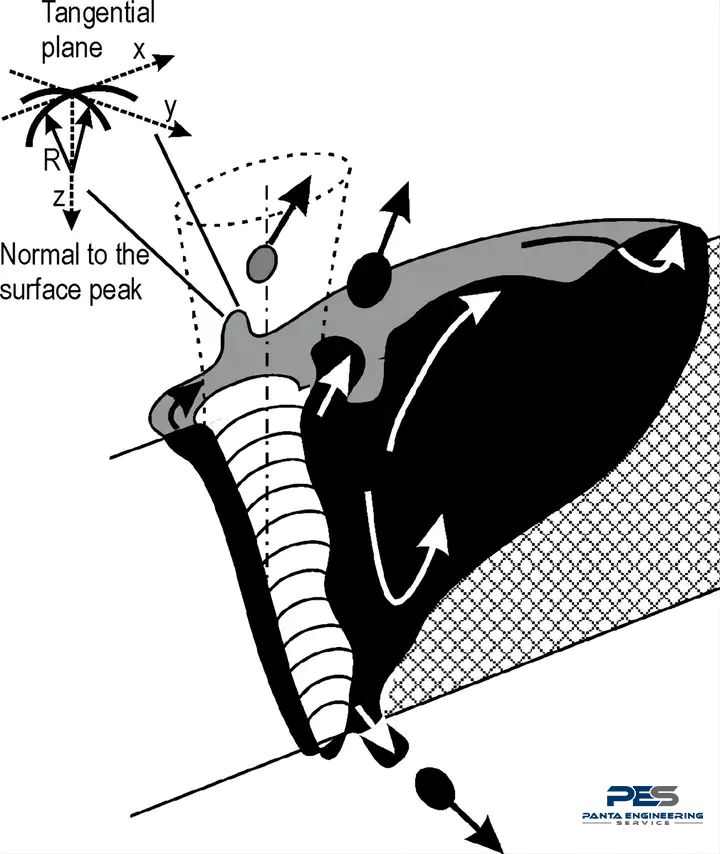
The figure above shows that the vertical shear force of the metal vapor provides the energy source for the vertical acceleration of the spatter droplets.
When the vertical flow component close to the upper surface exceeds a certain escape threshold, the spatter droplets can escape from the weld pool, as shown in the figure below. The escape threshold is determined by a combination of surface tension, surface geometry, viscosity, and local values of gravity. Surface tension is the most important consideration.
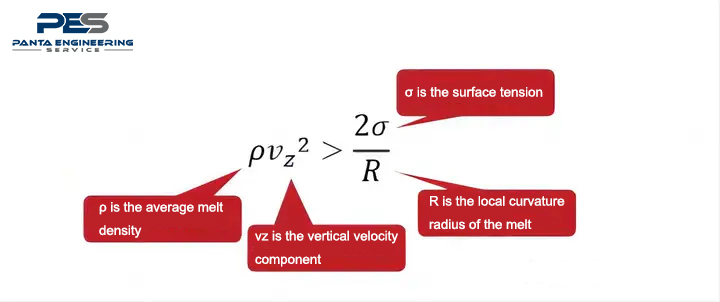
The key is vz (the vertical upward flow velocity of the liquid), which is mainly related to the recoil pressure and the metal vapor shear force. The recoil pressure provides the initial kinetic energy, and the metal shear force provides the upward acceleration kinetic energy. Once the speed reaches the escape threshold, splashing is formed.
Splashing influencing factor-metal shear force
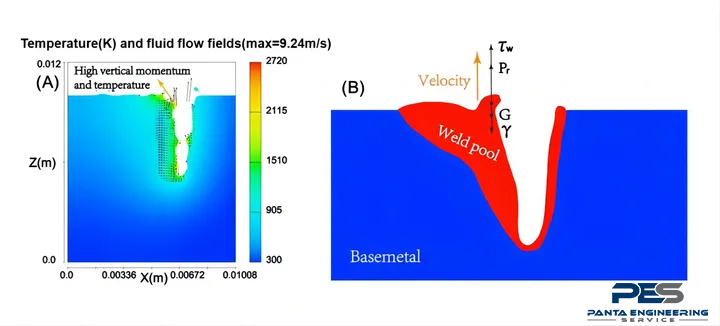
The vertical force balance of the molten metal around the keyhole is shown in the figure above. The main driving forces are recoil pressure and steam shear stress, and the main resistance is gravity and surface tension. According to experimental and numerical results and force balance, the high momentum of the molten metal, high recoil pressure and steam shear stress, and the low surface tension around the keyhole jointly contribute to the reason why splashing is easy to form around the keyhole.
Summary:
Splashing process: The generation of splashes can always be simplified into a basic sequence of phenomena: local boiling-melt acceleration-redirection of fluid flow-accumulation of vertical momentum-droplet ejection;
Force analysis: recoil pressure and steam shear stress, the main resistance is gravity and surface tension;
Necessary conditions for splashing: To generate splashes, the momentum of local molten droplets perpendicular to the surface of the molten pool must be sufficient to overcome the surface tension;
Summary: Find out what will affect recoil pressure, shear force, and surface tension. At this time, think about whether these forces can be avoided. If they cannot be avoided, how to reduce the impact of these forces
Reducing the impact of forces Method:
The recoil pressure mainly comes from metal vapor. If the evaporation volume changes suddenly (low-boiling-point elements, keyhole wall protrusions, absorption rate fluctuations), the recoil pressure will change dramatically, affecting the kinetic energy change of the molten pool and reducing the droplet escape velocity;
The shear force mainly depends on the change in the metal vapor and plasma and the air pressure in the keyhole (volume), so the keyhole can be stabilized and the metal vapor and plasma can be stabilized to suppress splashing;
Surface tension: depends on the temperature and the smoothness of the molten pool surface. The higher the temperature, the smaller the surface tension; the smoother the surface, the smaller the escape velocity;
Molten pool momentum: the momentum increases, the easier it is for droplets to escape. The keyhole opening diameter will fluctuate periodically: any increase in the opening diameter will reduce the distance between the keyhole and the liquid-solid interface in front of it and on both sides. This narrowing of the path will increase the local flow acceleration in the horizontal and vertical planes and increase the momentum of the molten pool droplets;
Avoid force action: only shear force can do this, just expand the keyhole and make the shear force not contact the droplets;
Recoil pressure fluctuation analysis-low boiling point metal elements, surface impurity pollution
The picture shows a video of low boiling point impurity pollution
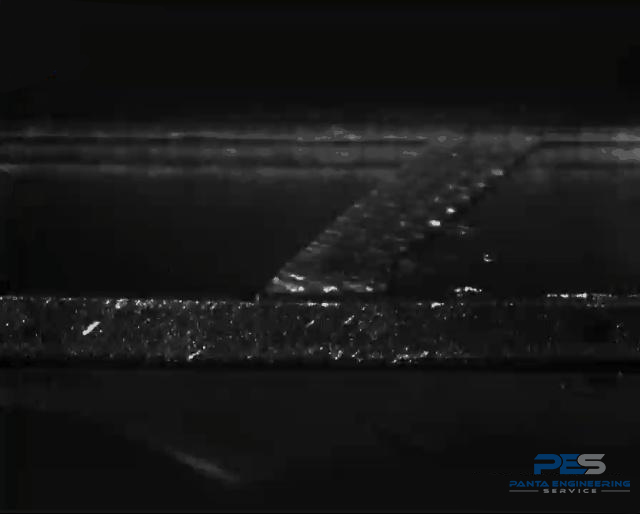
Low boiling point elements include: oil, plastic, aluminum chips and other impurities, as well as low boiling point alloy elements inside the material, such as magnesium, zinc, etc.
Some scholars directly observed the stability of aluminum alloy keyholes with different mass fractions of low boiling point elements through X-rays, confirming that low boiling point elements do affect the stability of the welding process.
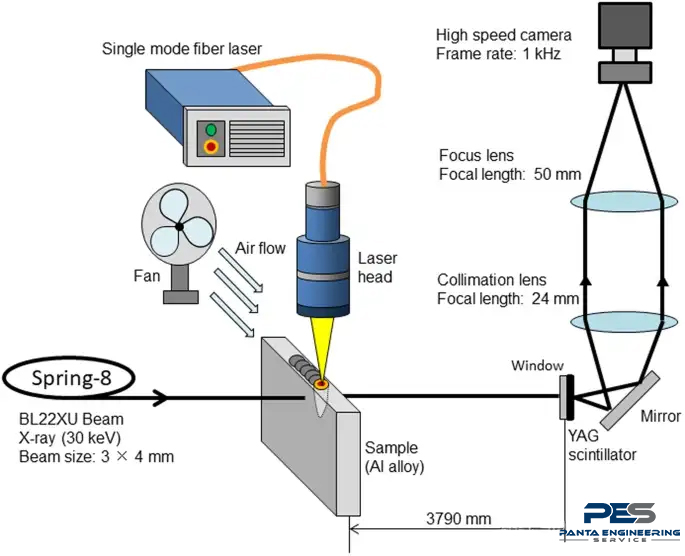

First, there are low-boiling-point alloy elements. If low-boiling-point metals are segregated and aggregated somewhere inside the material, once the laser contacts them, the metal will evaporate violently. The recoil pressure provided by the metal vapor jet accelerates the impact of the droplets on the edge of the keyhole of the molten pool, and increases the speed of the liquid flow inside the keyhole. The sudden increase in the shear force of the metal vapor on the droplets at the keyhole opening will cause splashing.
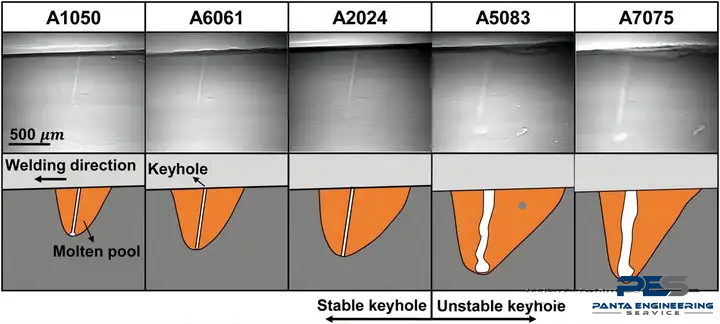
The figure above shows the typical keyhole and longitudinal characteristics of the molten pool of a representative aluminum alloy in the stable stage. The molten pool area before the keyhole is smaller than the molten pool area after the keyhole. In the molten pools of A1050, A6061, and A2024 (the mass fractions of low-boiling-point elements are 0.05%, 1.6%, and 2.1%, respectively), the diameter of the keyhole does not change much, and the keyhole is stable. In the molten pools of A5083 and A7075 (the mass fractions of low-boiling-point elements are 5.1% and 8.1%, respectively), the keyhole shape changes dramatically. These experimental results show that when the mass fraction of low boiling points is lower than 2.1%, the drastic fluctuation of the keyhole can be prevented, and the surface tension and recoil pressure of the metal vapor are balanced.
The evaporation of low boiling point elements provides high momentum to the molten pool, high recoil pressure to the keyhole, and increases the shear force to the droplets at the edge of the keyhole, resulting in splashing.

In addition, the tongue-shaped protrusion caused by the irregular flow of the front wall of the keyhole (possibly due to external mechanical vibration, power fluctuation, or the influence of laser monochromaticity) will also cause drastic changes in recoil pressure, resulting in splashing. The tongue-shaped protrusion on the front wall of the keyhole will cause violent instantaneous explosive metal evaporation, generate great metal shear force and recoil pressure, and the recoil pressure will accelerate the flow of the liquid molten pool, impact the rear of the molten pool and cause splashing; the metal vapor will impact the liquid metal at the edge of the keyhole opening and cause splashing.
Factors affecting recoil pressure - fluctuations in material absorption rate
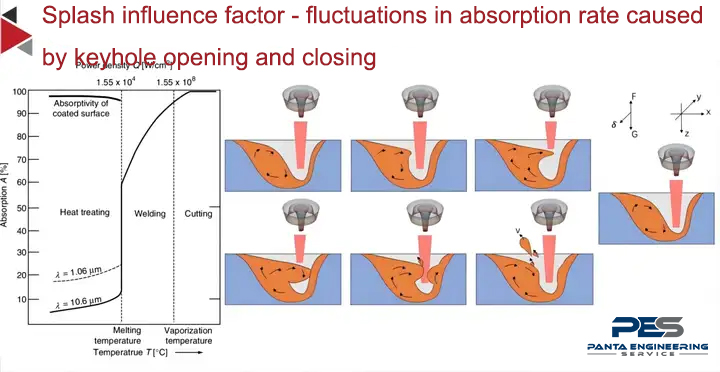
The absorption rate of materials to lasers varies at different temperatures and states. The figure shows the changes in the absorption rate of lasers to materials as the surface temperature changes. The absorption rate is low in the solid state, but once the melting point is reached, the melting absorption rate rises sharply to 30-60%. When a keyhole appears, it will reach more than 90%. Taking infrared laser welding of aluminum alloy as an example, the penetration depth is 5% in the solid state, 25% in the melt, and 90% in the keyhole. There are multiple heat input fluctuations. Because the keyhole is periodically opened and closed during the laser welding process, it will cause severe ablation recoil pressure (because the laser will periodically absorb fluctuations in the molten pool and keyhole during the opening and closing cycle).
Plasma causes power fluctuations

Plasma is mainly composed of a mixture of metal vapor and partially ionized electrons. When plasma appears, a large amount of incident power is absorbed by the plasma, resulting in the effective laser power density being reduced to 76% of the incident laser power density, causing the laser power to reach the molten pool keyhole to fluctuate by about 30%, greatly affecting the kinetic energy of the molten pool and the stability of the keyhole.
Как мы можем тебе помочь?